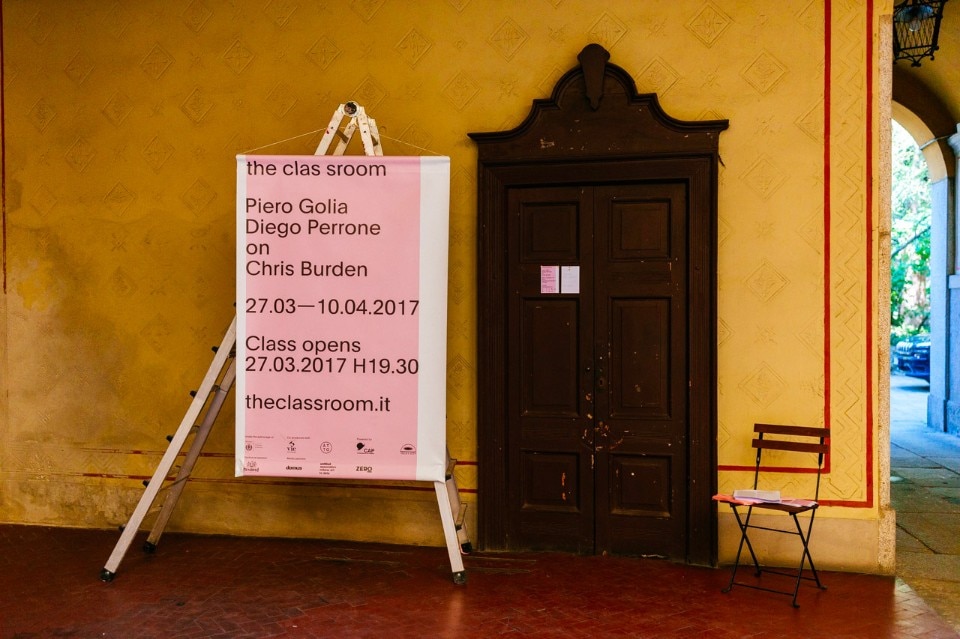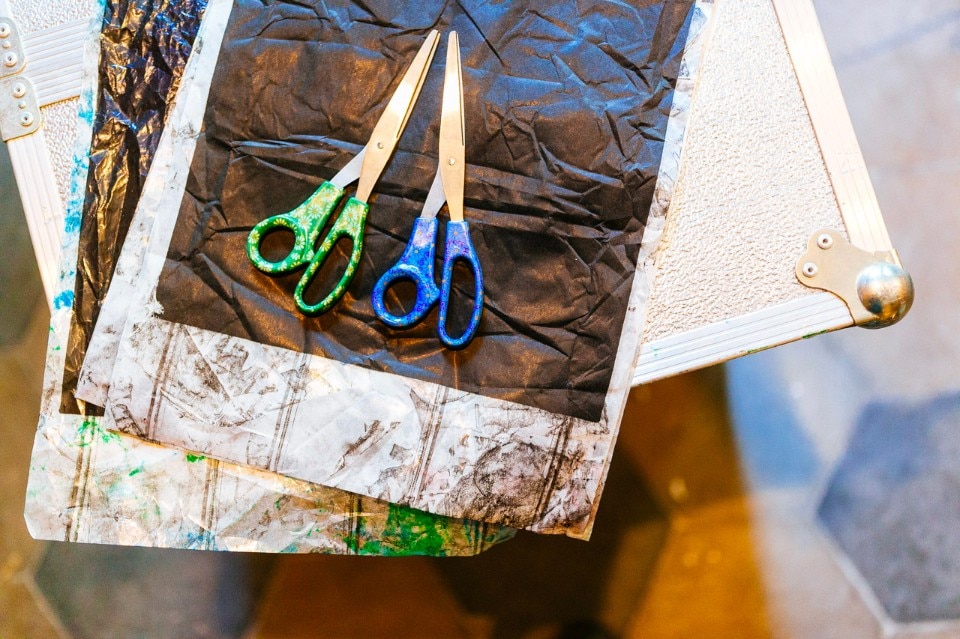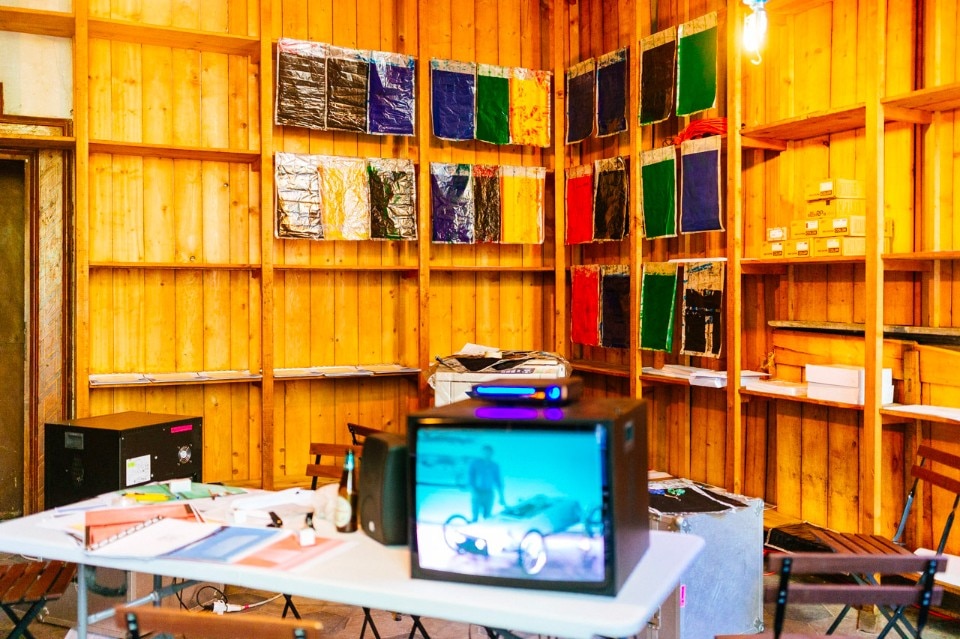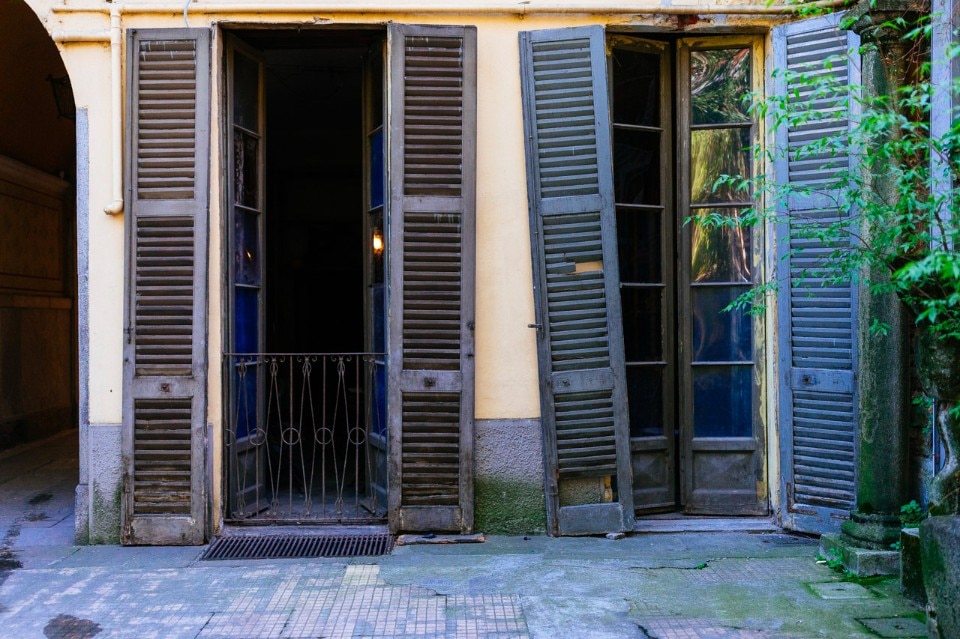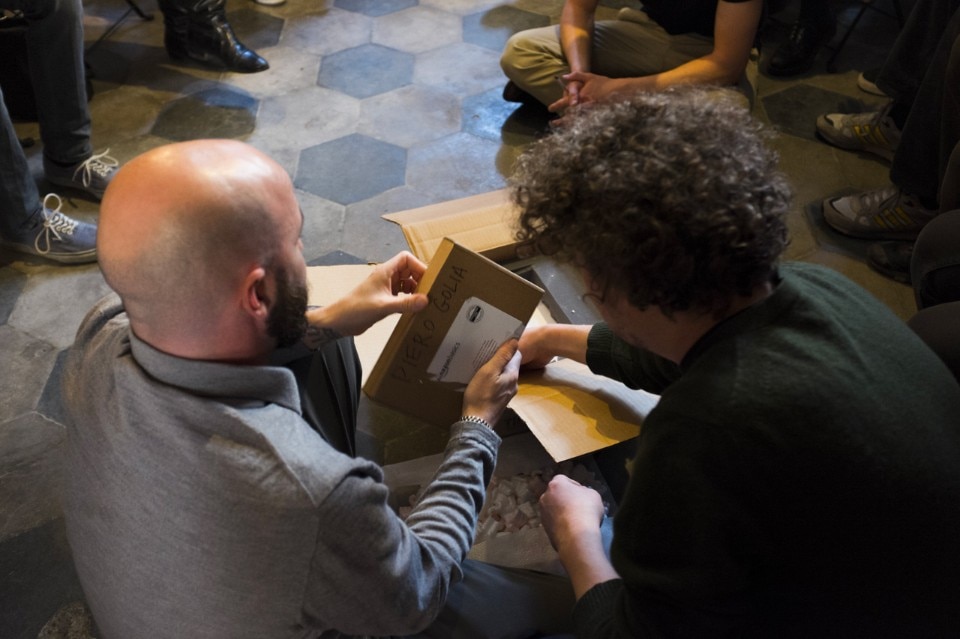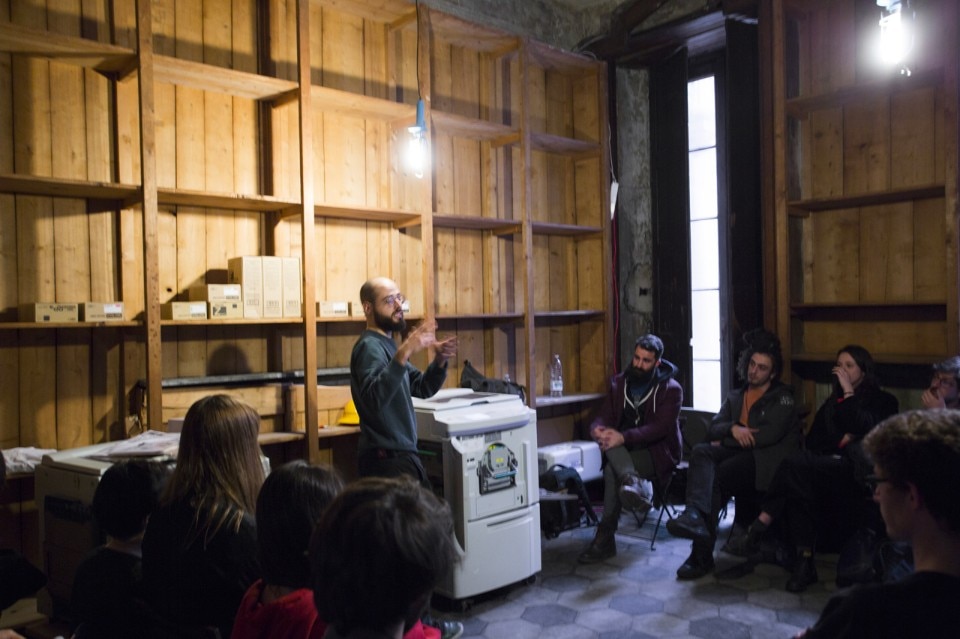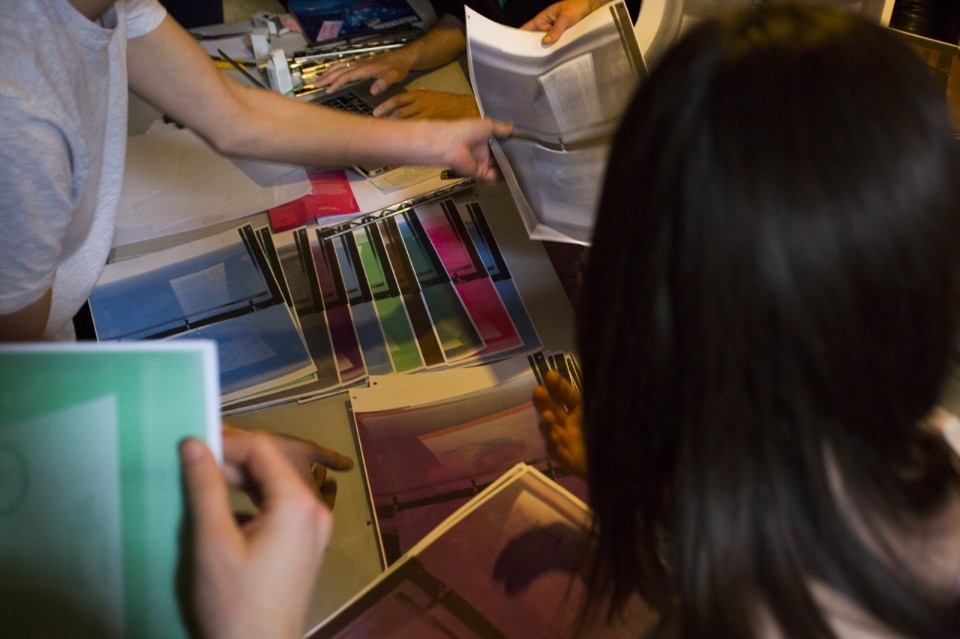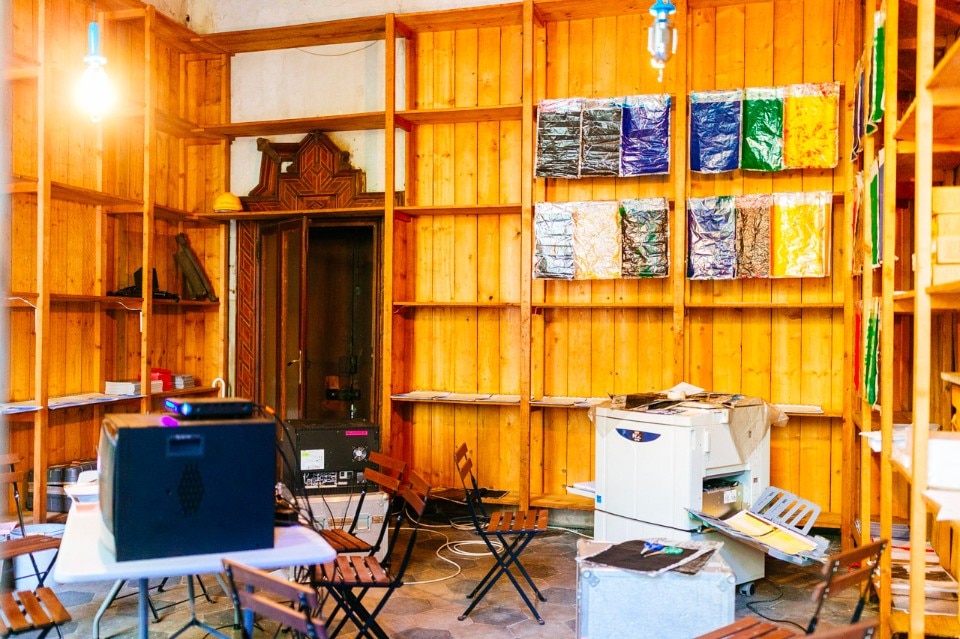
Domusweb: What is the meaning of building a relationship with Chris Burden who is American and far removed from the younger generations, if only because he is dead?
Paola Nicolin: With Classroom, we ask artists to create a history of art course for students and to design their classroom. On this occasion, we wanted to create an inter-generational dialogue and this year we invited Piero Golia, an Italian artist living in Los Angeles who knew Burden. Twelve years ago, he founded The Mountain School of Arts and so he has a clear understanding sense of what is. Golia agreed to our proposal, which also meant working with Diego Perrone, a sculptor and artist of his generation. We liked the idea of having two different viewpoints on Chris Burden.
How do you narrate an artist who is very famous but mainly to a public of contemporary art insiders who often only know some of his works – I’m thinking of the performance in which he shot himself in the arm – which can be quite complex? A sort of dual portrait emerged and it was all facilitated by the fact that Piero Golia managed to borrow original Burden material from the family. To do this, he visited his studio in Tupanga, California, and told the family what they would be used for, that is not a traditional exhibition but a workshop. This meant the class had great material to work with.
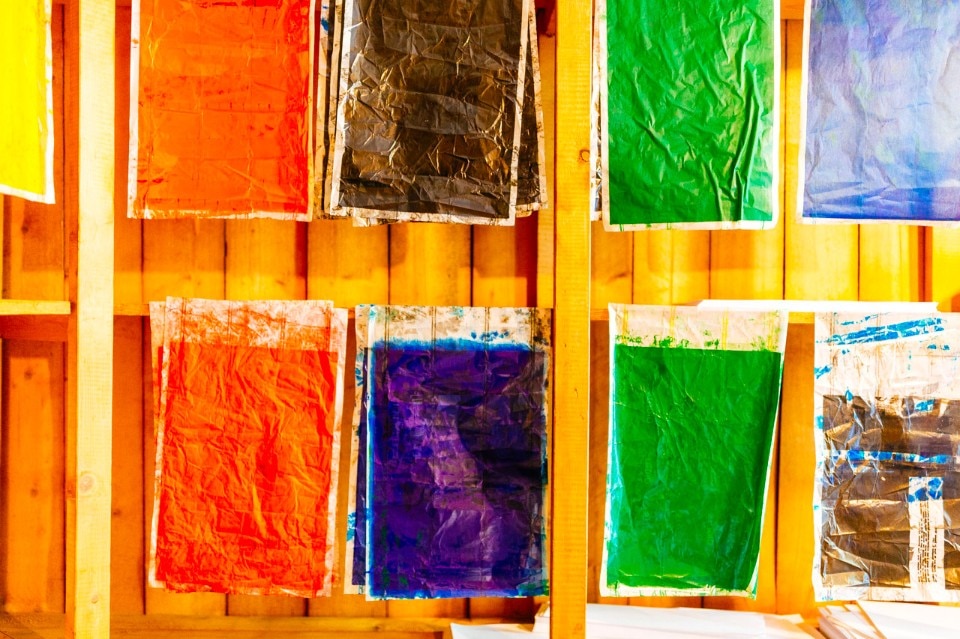
Domusweb: Do you believe that inter-generational dialogue is being constructed after years when this has stopped happening?
Paola Nicolin: There is certainly a desire to relate to history in a very free and fresh way and to look at lesser-known episodes in recent art history and use them as raw material. I am thinking, for example, of the poetics of the archive, one of the most important contemporary languages, or the rehabilitation of the Modern period, sometimes even from its ruins, and also the revival of the collage technique. There must be an awareness that the future is constructed based on the recent past but also the distant past, without too many qualms. I don’t believe artists talk to each other that much. Certainly, they form part of a community, living and breathing the exchanges occurring within it. I don’t, however, believe they talk to each other very much. Today, this is happening a little more because contemporary art is increasingly adopting the form of conversation. The fact that major institutions and museums organise many opportunities for dialogue, primarily with the public, means that those “around the table” also talk to each other. I find this extremely interesting because it is another way of writing the history of art, achronologically and in which the threads of history interweave. It is the great revolution of the 2000s. If it is true that, as Alessandro Mendini claimed, every person is a school, then every artist is a school, too.
Domusweb: What about direct dialogue between artists?
Paola Nicolin: I remain dubious on this point. The established artists have packed diaries and travel the world, so they have little time. There is, however, a trend in this sense. It happens but not very frequently.
Domusweb: What has the outcome of this workshop been? Are you satisfied?
Paola Nicolin: Yes. It was a tough challenge. It isn’t easy to talk about sculpture, performance and photography through third parties. The students really did form a small closely knit class despite coming from different backgrounds and this is another interesting aspect of Classroom. We have seen an influx not just of students from the Fine Arts Academies – a “natural” disciplinary sphere – but also from the Polytechnic and other education fields.
It was also interesting to see that Golia and Perrone really did develop two different viewpoints: one more centred on the story, the anecdote and the historiography; and the other focusing on Chris Burden’s materials, his matter.
The space proved fitting for the content, despite being a cold space with no heating and not renovated but, if anything, this simplified the idea of the workshop, the place where a “chemical reaction” is created. The space enabled us to be more spontaneous and experimental, allowing students and teachers to challenge and influence each other. Finally, I am pleased that the material product of the workshop, a small fanzine they produced, is a way of presenting Burden without showing him. The fanzine is bound with pieces of Meccano that belonged to Burden and were given to us by his family.
It’s the first time Classroom has produced a tangible work that goes away with each student and this, too, is a positive outcome.
until 10 April 2017
The classroom
Piero Golia Diego Perrone on Chris Burden
curated by: Paola Nicolin
via Cesare Correnti, 14 Milan

